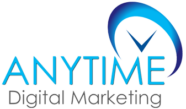
Last Updated on November 18, 2021 by anytimedigital
2021 was almost as unpredictable as the previous year. However, it made us fully aware in a different way how we communicate and interact with one another. Common marketing patterns were thrown out the window! Creativity was more crucial than ever, and adapting rapidly was frequently the key to success. The same can be said for paid search trends.
Campaign managers many changes throughout the year. For example, information points changed drastically, seasonal shifts came at brand-new times, and certain standards no longer applied. What does this mean for Google PPC ad trends in 2022?
Search Terms: A Thing of the Past
Goodbye to Third Party Cookies
Despite the fact that Google delayed getting rid of third-party cookies through its Chrome internet browser, it’s become apparent that third-party cookies are going away. Therefore, making first-party data beyond valuable. That’s why organizations require to begin investing in their first-party data now vs. the future.
Information has always been an integral property for brands wanting to strategize reliable PPC campaigns. However, companies like Google are making ad-tracking efforts progressively difficult. PPC managers will need to take a better take a look at search terms instead of just keywords.
First-party information can originate from a number of places. For instance, business cards collected at a trade show or e-mail sign-ups on your website. You can also utilize software like Leadfeeder, Clearbit, Whoisvisiting and Snitcher to qualify and identify traffic to your website.
AI and Machine Learning Capabilities
Automation is exploding within the digital marketing world. Therefore, it is going to be one of the substantial PPC trends in 2022. If you want greater success with your PPC efforts, you should get familiar with how automation works. When mastered, it helps marketers conserve time while finding methods to utilize artificial intelligence (AI) to gain an edge over rivals. PPC managers will be more concentrated on fine-tuning their machines and setting up campaigns for any variances. This will take priority than doing daily account maintenance on active projects.
Google has announced that by the end of June 2022, expanded text ads will be stopped. Therefore, this suggests that advertisers will just have the choice to create responsive text ads for their paid ad campaigns. In addition, Google will automate your headlines and description best fit to match the search query. For this factor, comprehending automation and AI will help you scale campaigns effectively. And, optimize your ROI on pay-per-click marketing spend.
In 2022, the advice for Google advertisers will be to try out these automated PPC strategies as effectively as possible. Automating your work process implies that devices will do all the time-consuming jobs that are essential. However, they may not have as much impact on outcomes, letting you concentrate on more intricate tasks.
Audience Affinity Targeting
Video Marketing and PPC
Until recently, Facebook was the leading platform for video advertisements, but as advertisers have reported ever harsher policies towards them, many have been moving their budgets to YouTube. However, unlike traditional display and text-based ads, video ads on YouTube should focus on engaging the user quickly.
In addition, as smart TVs continues to find its way to more homes, it’s quickly becoming the preferred screen for watching YouTube videos. In fact, people watch one billion hours of content on YouTube on televisions each day. That’s up from 450 million in June 2020 and 250 million in 2019. OTT (over the top) and CTV (connected TV) advertising will become a household name in 2022. Therefore, television will become a potential PPC campaign must.

